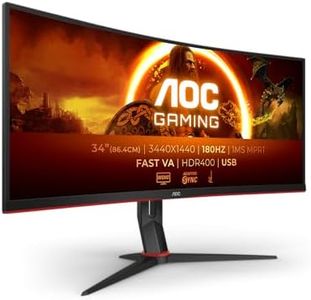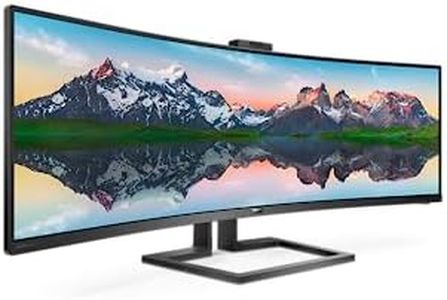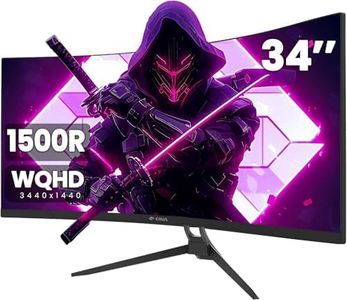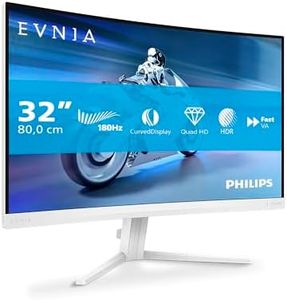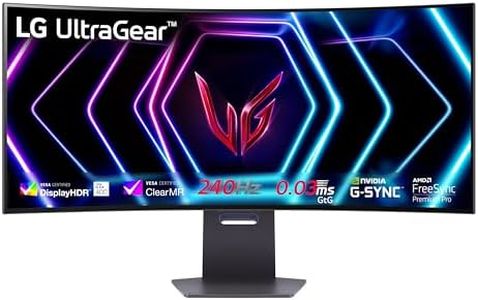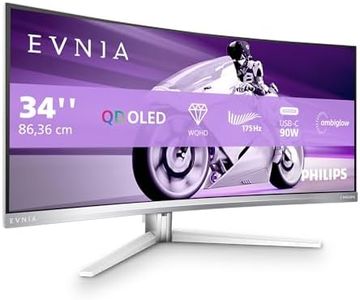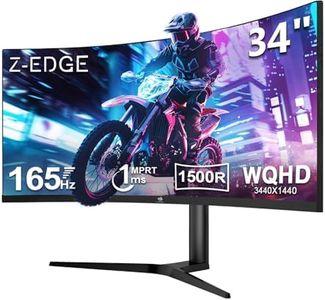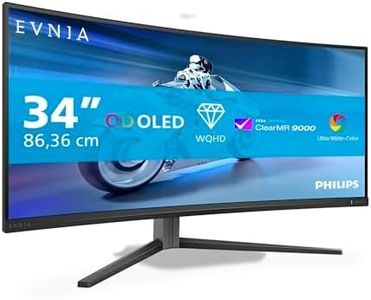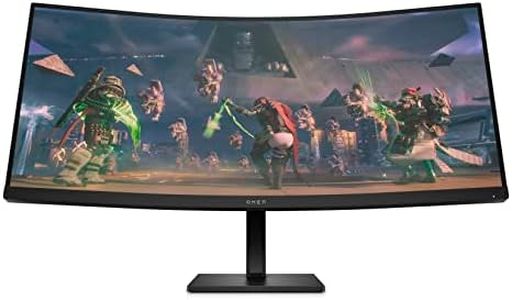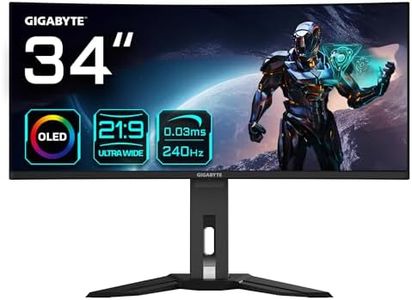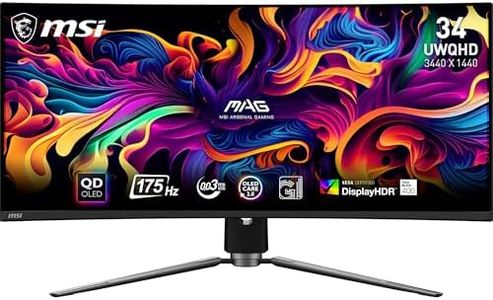We Use CookiesWe use cookies to enhance the security, performance,
functionality and for analytical and promotional activities. By continuing to browse this site you
are agreeing to our privacy policy
10 Best Ultrawide Gaming Monitors
From leading brands and best sellers available on the web.Buying Guide for the Best Ultrawide Gaming Monitors
Choosing the right ultrawide gaming monitor can significantly enhance your gaming experience by providing a wider field of view and more immersive gameplay. When selecting a monitor, it's important to consider various specifications that will impact your gaming performance and visual enjoyment. Understanding these specs will help you make an informed decision based on your gaming needs and preferences.ResolutionResolution refers to the number of pixels that make up the display, impacting the clarity and detail of the image. For ultrawide monitors, common resolutions include 2560x1080, 3440x1440, and 5120x2160. Higher resolutions provide sharper images but require more powerful hardware to run smoothly. If you play graphically demanding games and have a capable graphics card, opt for a higher resolution like 3440x1440 or 5120x2160 for better detail. If your hardware is more modest, a 2560x1080 resolution might be more suitable.
Refresh RateRefresh rate is the number of times the monitor updates the image per second, measured in Hertz (Hz). A higher refresh rate results in smoother motion and is crucial for fast-paced games. Ultrawide gaming monitors typically offer refresh rates ranging from 60Hz to 240Hz. For competitive gaming, aim for at least 120Hz or higher to ensure fluid gameplay. Casual gamers might find 60Hz sufficient, but a higher refresh rate can still enhance the overall experience.
Response TimeResponse time is the speed at which pixels change color, measured in milliseconds (ms). Lower response times reduce motion blur and ghosting, which is important for fast-moving scenes. Monitors with response times of 1ms to 5ms are ideal for gaming, providing crisp and clear visuals during action-packed moments. If you play a lot of fast-paced games, prioritize a monitor with a lower response time to maintain image clarity.
Panel TypePanel type affects color accuracy, viewing angles, and response times. Common types include IPS, VA, and TN panels. IPS panels offer excellent color reproduction and wide viewing angles, making them great for immersive gaming and multimedia use. VA panels provide better contrast ratios, ideal for darker scenes, but may have slower response times. TN panels have the fastest response times but poorer color accuracy and viewing angles. Choose IPS for vibrant visuals, VA for contrast, or TN for speed, depending on your gaming priorities.
Aspect RatioAspect ratio is the proportional relationship between the width and height of the display. Ultrawide monitors typically have a 21:9 aspect ratio, offering a wider field of view compared to standard 16:9 monitors. This is particularly beneficial for immersive gaming experiences and multitasking. If you enjoy games that support ultrawide resolutions or need extra screen space for productivity, a 21:9 aspect ratio is ideal. Ensure your favorite games support this aspect ratio to fully benefit from the wider view.
ConnectivityConnectivity options determine how you can connect your monitor to your computer and other devices. Common ports include HDMI, DisplayPort, and USB-C. DisplayPort is often preferred for gaming due to its ability to support higher resolutions and refresh rates. HDMI is widely used and compatible with most devices. USB-C offers versatility, especially for connecting laptops. Consider the devices you plan to connect and ensure the monitor has the necessary ports to accommodate them.


